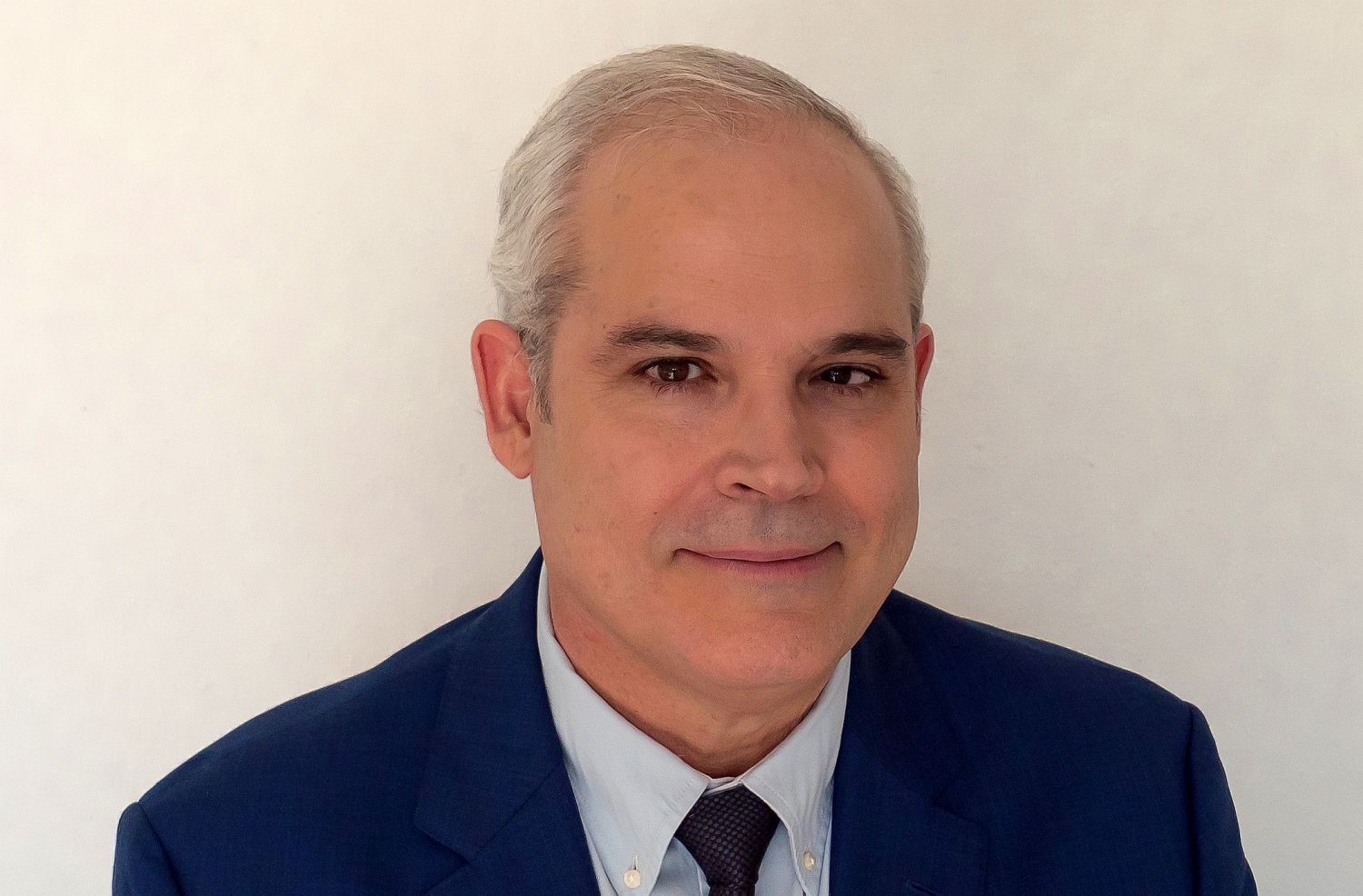Digital Banking, then & now
Interview with Sixto Suñé, CEO TCG International
With your technology background, how did you get started with business processes automation for financial institutions?
I’ve been involved with document automation processes at banks for two decades at this point. At the beginning, we were all involved in digital transformation projects - really these were projects that focused on just getting rid of paper, allowing people to access information from electronic documents. Moving from physical paper to digital images improved efficiency quite a bit, especially in projects where we were able to dematerialize paper at the point of receipt - those were great. But very quickly we saw banks needed a more agile solution - technology that could actually understand the content of the documents - because manual entry of data was still error-prone. Processes like credit approval were helped with the move to digital documents, but financial institutions still had errors in data entry, in validation, routing, etc. which impacted the entire process.

What were the first uses of process automation you saw in the banking world?
In my first role, I was with a technology provider that was quick to buy commercial, off-the-shelf technology from multiple companies, just to see how it worked and what was possible. With all of this great software in our hands, we created one of the very first intelligent capture solutions in the banking world by utilizing several different technologies in the same solution. This gave the client the highest straight-thru processing rates possible at the time, but wow was it hard to implement because it was really software from multiple companies. Nothing existed in a unified platform.
At that time, top quality imaging software was of huge importance because of its impact on optical character recognition (OCR) accuracy. Next, of course, was selecting the best OCR technology possible, accompanied by a different software solution to auto-classify the document identification. Then we had to add another tool for field extraction... All of this was necessary at the time for accuracy, but we still needed to ensure a very tight service level agreement (SLA) from the document point of entry, through to the back office for processing and then back to the customer-facing person.
This was quite a feat, if you consider that we are talking about 17 years ago… At that time there was not a single platform concept under which all of these processes could be carried out. So the solution we built at the time required a lot of scripting and putting together various vendor technology components. Most organizations (including ours) had never attempted to stitch these technologies together - we honestly weren’t 100% sure it would work. While we knew it was potentially possible, we also understood there was too much customization required to really replicate for other banks who wanted to do something similar.
"TCG’s DocProStar customers don’t know how good they have it compared to the other, older solutions!"
In your role at TCG, you deal with both global and regional banks. I imagine there are both unique and shared process automation challenges between them. What rises to the top as the most common problems in need of a solution?
When helping banks of any size automate their core, critical, document-centric processes, it’s as important to have industry-specific skills for the process as it is to have industry-specific products. You have to be adaptable to a wide range of needs: every bank we’ve engaged with has a similar end goal, but their challenges in the process vary widely, even if their environments are similar. Though each bank, whether global or regional, may share a common process outcome, they often have different methods of addressing the same process.
This means everyone - from the process engineer to the technology provider to the software itself must be capable of adapting to an individualized circumstance and be flexible in its approach. To provide ultimate efficiency for credit origination, or consumer loans, for example, certain documents are required, regardless of the processes or financial systems that the bank uses. A solution must remain agnostic - and really unobtrusive at times; we often find ourselves needing to be able to adapt to a customer’s “mess.” Adaptability is key.
To be honest, once DocProStar is set in production, things fall into place. Preconceived notions often fall away, especially with regional banks, once the rollout occurs. We often end up teaching them something new, but they have to come to it on their own time.
Another example-- we have a large global customer who came to us with interest in tackling their customer onboarding process. If we took on the whole thing at one time, we knew the project would be endless. We started the process with just enough services to start doing the onboarding on the platform, even though we knew 60% of the process wouldn't be automated originally. We knew we could enable just 40% of the microservices. Depending on the bank, they could take a long time to do the work. Many times you have to just go as fast as the customer can go and then long term let them push the pedal harder.
What are the unique problems banks face that makes it more important for them to automate processes?
It’s about money! Financial institutions and the products they offer are heavily regulated and bound by lots of government rules and procedures. This means they have a need for tracing and auditing their product agreements and processes. Additionally, the processes that surround things like customer applications and onboarding for these financial products need to be executed quickly and efficiently because competition is fierce, and margins are low. In a nutshell, banks and financial institutions are looking to mitigate risk while providing a fantastic customer experience. It’s almost impossible to do this without process automation.
The channels through which information flows to these organizations are immense and overwhelming; it’s difficult to properly train and expect employees to enforce compliance in all of these regulatory processes. This is where we come in - it is essential for banks and financial institutions to identify a tool that can rapidly turn documents and unstructured data into real, actionable information. Only now can they utilize that data to make decisions automatically and according to business rules. We do it with an optimal mix of a no/low code platform, bots, and the customer’s own systems and employees.

"Being able to bring people and bots together is key to solving banking challenges new and old."
Banks are focusing on doing business with a new type of customer - one with an expectation of a "coffee shop-style" community environment rather than the "old school" brick-and-mortar bank and its more traditional ways of doing business. How has the TCG technology stack helped with this transformation?
As we discussed, competition is fierce in this industry, and it is absolutely necessary for large, traditional brick-and-mortar banks to provide a front-end customer experience that is competitive with these new best-in-class customer banks and FinTech companies. A great customer experience always builds trust!
The struggle for established banking organizations is that they have a patchwork of legacy banking software systems - dinosaurs we sometimes call them - that pose huge challenges to providing that special customer experience. Upgrading these complicated older systems comes with multi-million dollar price tags, so making a huge change of that nature in a short time span can be unrealistic.
"Instead, we help banks offer their customers a seamless engagement by being able to tie together modern front-end tools like mobile and social with their old-fashioned, or legacy, back-end systems."
TCG’s platform enables two-way communication between a new type of customer and the traditional way of doing business… TCG helps automate the complete process leading up to the transaction.
What are those "customer facing" processes that banks are looking to automate? And, conversely, what are the "back office" processes?
Bank processes almost always have both a front-end, or customer-facing, component, and a back office component. Most of the heavy lifting the TCG DocProStar platform is doing occurs on the backend, or in the back office. However, back office processing fuels and supports those customer engagements. Quick turnaround on these processes is key. Even if the bank’s customers don’t “see” our technology, they certainly ‘feel’ it.
Where TCG sees the most customer-facing activity for its solutions is in the mobile SDK we provide. This important tool helps banks to enable capture on the customer side, while integrating with a bank’s existing mobile app platform and therefore smoothing that customer experience.
If we use customer onboarding as an example, the TCG platform has supported both traditional and digital banks in this process. Digital banks will often work with a technology company that has a very dynamic, interesting web front end with a lot of rich features, which then sends all of its incoming customer onboarding information into the TCG platform.
"And it’s not just customer onboarding, we are processing any banking product like auto loans, consumer loans, mortgages…"
How do BPO (business process outsourcers) fit into the banking market? How are their technology or process challenges different?
BPOs are a key piece of the puzzle in banking. Anytime we are doing work with a financial institution, we are often also talking to their BPOs or outsourcers.
It used to be that these outsourcers felt they needed to have their own technology products to remain relevant. But in our work with BPOs, they are starting to see that relying on a best-in-class vendor for technology can then allow them to focus on being agile and truly focus on their goal of improving the efficiency of their bank customers.
TCG’s current platform was built with BPOs and shared service centers (SSCs) in mind, even down to our implementation models, commercial terms and costing schemes.

What do you think is the next major trend in business process automation (BPA) that people should be paying attention to today?
Without selling any of our secrets here, I can say with confidence that the process automation industry is moving toward fully automated, or straight-thru processing, which is perfectly aligned with what banks want. What fully automated processing will enable is not just fast transaction times or efficient ways of working, but also improved return on tangible equity.
Additionally, it will fuel real-time decision making. Massive amounts of data, once they get fully processed and understood, generates powerful options to enable banks to predict customer needs while maintaining the optimal efficiencies. Putting these tools in the hands of decision makers and not just lower-skilled workers means decision makers will be empowered to make on-the-fly decisions. This would be impossible to do without modern tools like the TCG platform, and certainly can’t be done with the systems they have in place today.
As we see today, information exists not only on documents but in other types of media like video, images, social feeds - and this will continue into the future. TCG’s platform has a concept of WYSIWYP, or What You See Is What You Process - we can process information in whatever format or structure it arrives to your organization and apply those key business rules regardless of where that information originates.
Any solution that will be relevant in the long term will also be focused on interoperability, as we weave together systems from the past and services not even yet created. Forward-thinking processing platforms should be easily able to leverage microservices like fraud detection and IoT in a way that connects them into the process flows seamlessly.
Please share a funny story that customers or partners can read that would give them an insight into the culture of TCG.
Lots of funny things happen when people of different cultures get together. There are so many stories I could reference - from bringing my Swiss colleagues to a real Brazilian steakhouse where the price of meat is measured by the volume of grams you are eating, to grown men eating snow like a 5-year-old kid in Switzerland.
And there are lots of things that tie us together, like enjoying good wine for example. It’s a very light-hearted and healthy relationship we have with one another in this organization. We all share a love for other cultures and doing good work together all over the world.
How long have you been with TCG and in what roles have you been trusted to help lead with the company?
I joined TCG about 8 years ago after a long-term friendship and professional relationship with [TCG CEO] Arnold. I had worked with him previously at Dicom and Kofax, and when TCG was ready to take their solutions internationally, I was excited to be a part of that expansion.
We have replicated what Arnold and I had done successfully in the past, and we have enjoyed a good cadence of working together in a similar way as we had done in other companies: be global, act local.
"Be global, act local."
I share the company’s goals of keeping a high standard of quality of work, on both a global and local level, and growing in a smart way that avoids taking on investment.
What do you like to do in your free time?
We are home-bound right now, but I enjoy spending quality time with my wife while traveling. In months where there is no travel, my wife and I have been perfecting our culinary skills ... learning to bake bread and things like that.
In addition to travel, we love wine - we’ve always lived in places where there is a wine culture. We enjoy spending time in vineyards and researching the history of the area, learning about the cultural heritage of where the wine comes from.

